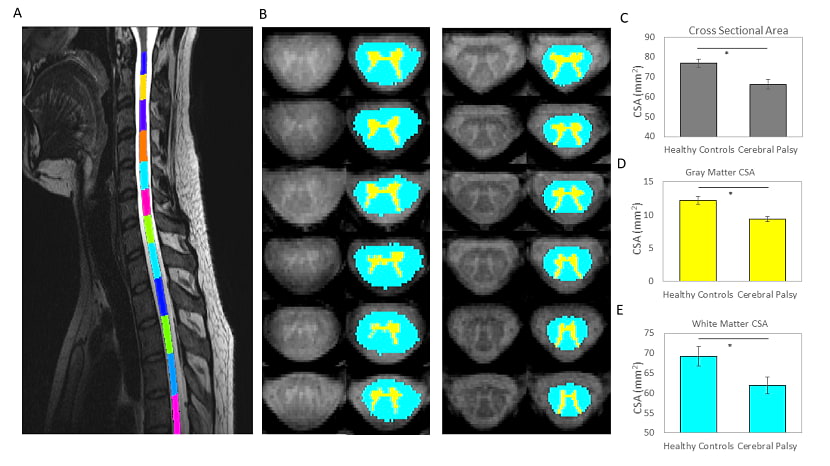Cerebral Palsy: Microstructural Changes in the Spinal Cord Tied to Hand Motor Control
Monday, August 30, 2021
While the study of brain structure and function in individuals with Cerebral Palsy (CP) is fairly common, until recently, the spinal cord has not been studied as closely due to difficulties with the spasticity caused by CP and the need to remain motionless during Magnetic Resonance Imaging (MRI).

Researchers at the Boys Town PoWER Laboratory have published research that ties microstructural changes in the spinal cord, including reduced grey matter in the cross-sectional areas, to deficits in manual dexterity.
But now, researchers at the Boys Town PoWER (Physiology of Walking and Engineering Rehabilitation) Laboratory have published research that ties microstructural changes in the spinal cord, including reduced grey matter in the cross-sectional areas, to deficits in manual dexterity.
“Not only were we able to successfully image the spinal cord in adults with Cerebral Palsy, which has its challenges, but we were able to identify microstructural changes in the upper spinal cord and to connect these changes with hand functioning as measured by a clinical test," said Michael Trevarrow, a Postdoctoral Research Fellow at the PoWER Lab.
“By identifying alterations within the upper spinal cord and directly connecting those to sensory-motor impairments of the upper extremities, we are providing an avenue for future work to establish what other roles the spinal cord plays within this population," Trevarrow said.
For more information on this exciting new study from the PoWER Lab, visit:
https://doi.org/10.1111/dmcn.14860
